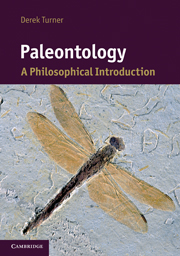Book contents
- Frontmatter
- Contents
- List of figures
- Acknowledgments
- 1 Introduction
- 2 A new way of seeing the fossil record
- 3 Punctuated equilibrium
- 4 Species and macroevolution
- 5 The case for species selection
- 6 Real trends, relative progress
- 7 Dynamics of evolutionary trends
- 8 Evolutionary contingency
- 9 Diversity, disparity, and the Burgess Shale
- 10 Molecular fossils
- Bibliography
- Index
9 - Diversity, disparity, and the Burgess Shale
Published online by Cambridge University Press: 05 June 2012
- Frontmatter
- Contents
- List of figures
- Acknowledgments
- 1 Introduction
- 2 A new way of seeing the fossil record
- 3 Punctuated equilibrium
- 4 Species and macroevolution
- 5 The case for species selection
- 6 Real trends, relative progress
- 7 Dynamics of evolutionary trends
- 8 Evolutionary contingency
- 9 Diversity, disparity, and the Burgess Shale
- 10 Molecular fossils
- Bibliography
- Index
Summary
Does the fossil record have anything to say on the issue of contingency vs. convergence, beyond supplying examples of evolutionary convergence? In this chapter, I examine the main argument that Gould develops in his 1989 book, Wonderful Life. I also look briefly at recent reassessments of that argument (Brysse 2008; MacLaurin and Sterelny 2008; see also Baron 2009). In the end, I'm not optimistic that the fossil record will be able to settle what may well be the deepest questions about evolution. Gould's argument, as it happens, is rather difficult to make out. His discussion of the Burgess Shale organisms raises some important philosophical questions – for instance, about the concept of disparity and about methods of biological classification – but it is a challenge to figure out why Gould thought that the fossil record might contain evidence that evolution is contingent. Belief in the contingency of evolutionary history is something that scientists bring to the fossil record, rather than something they extract from it.
Gould on the Burgess Shale
The Burgess Shale, in the Canadian Rockies, is what scientists sometimes call a Lagerstätte – a layer of rock containing a high concentration and large variety of fossil remains. Discovered in 1909, the Burgess Shale dates from around 505 million years ago, and it offers scientists a vivid look at invertebrate marine life during the Cambrian period, before the evolution of vertebrates, and before life had moved from the oceans onto the dry land.
- Type
- Chapter
- Information
- PaleontologyA Philosophical Introduction, pp. 180 - 196Publisher: Cambridge University PressPrint publication year: 2011



